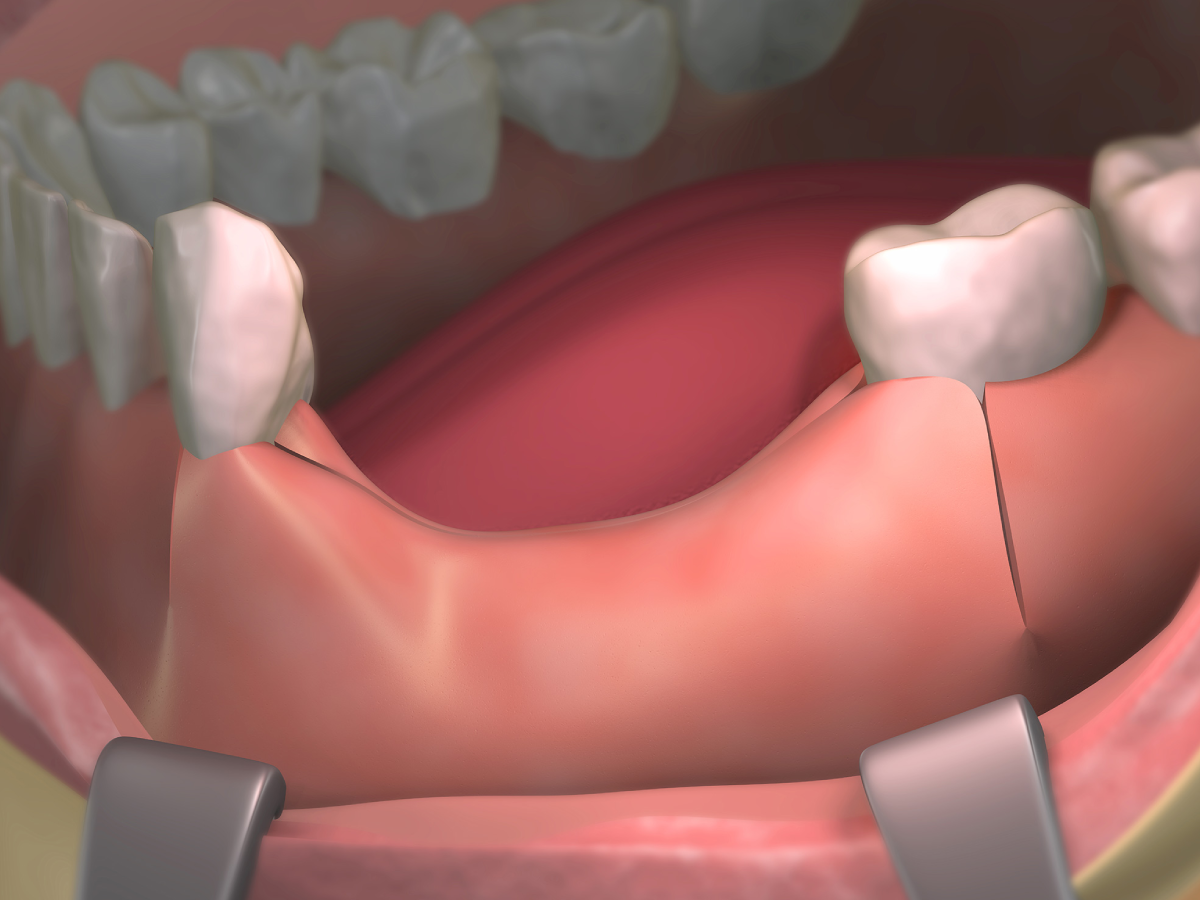Bone Grafting
Bone Grafting Overview
For a brief narrated overview of the bone grafting process, please click the image on the right. It will launch our flash educational MiniModule in a separate window that may answer some of your questions about bone grafting.

Bone Grafting
Over a period of time, the jawbone associated with missing teeth atrophies or is reabsorbed. Also, patients that have been diagnosed with periodontitis have bone loss around their teeth. Both of these conditions lead to poor or no bone quality and quantity.
Today, we have the ability to “grow” bone where needed. This not only gives us the opportunity to place implants of proper length and width, it also gives us a chance to restore functionality and esthetic appearance.
Bone grafting procedures can be used for periodontal defects, for socket and ridge preservation after extractions, ridge augmentation, which is to rebuild or thicken the ridge prior to dental implants, restorative therapy, and in sinus elevations. There are many different types of bone grafting materials available today.
Ridge Preservation
Careful management of extraction sockets after tooth extraction prevents unsightly bone loss and provides a better cosmetic outcome for tooth replacement.

We do not place the crowns, that will be done by your general dentist.
Sinus Lift Procedure
The maxillary sinuses are behind your cheeks and on top of the upper teeth. Sinuses are like empty rooms that have nothing in them. Some of the roots of the natural upper teeth extend up into the maxillary sinuses. When these upper teeth are removed, there is often just a thin wall of bone separating the maxillary sinus and the mouth. Dental implants need bone to hold them in place. When the sinus wall is very thin, it is impossible to place dental implants in this bone.
There is a solution and it’s called, a sinus graft or sinus lift graft. The dental implant surgeon enters the sinus from where the upper teeth used to be. The sinus membrane is then lifted upward and donor bone is inserted into the floor of the sinus. Keep in mind that the floor of the sinus is the roof of the upper jaw. After several months of healing, the bone becomes part of the patient’s jaw and dental implants can be inserted and stabilized in this new sinus bone.
The sinus graft makes it possible for many patients to have dental implants when years ago there was no other option other than wearing loose dentures.
If enough bone between the upper jaw ridge and the bottom of the sinus is available to stabilize the implant well, sinus augmentations and implant placement can sometimes be performed as a single procedure. If not enough bone is available, the Sinus Augmentation will have to be performed first, then the graft will have to mature for several months, depending upon the type of graft material used. Once the graft has matured, the implants can be placed.


